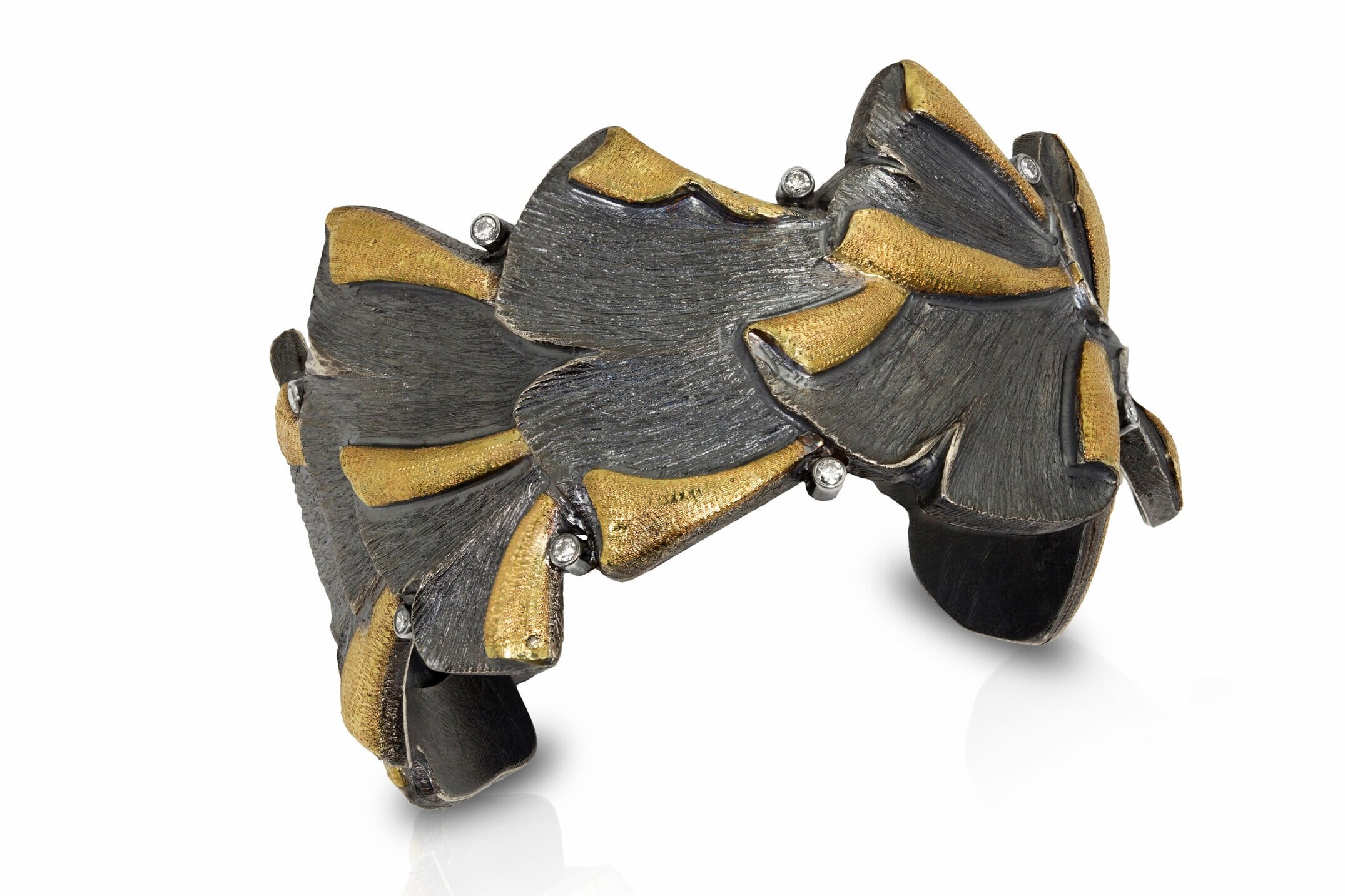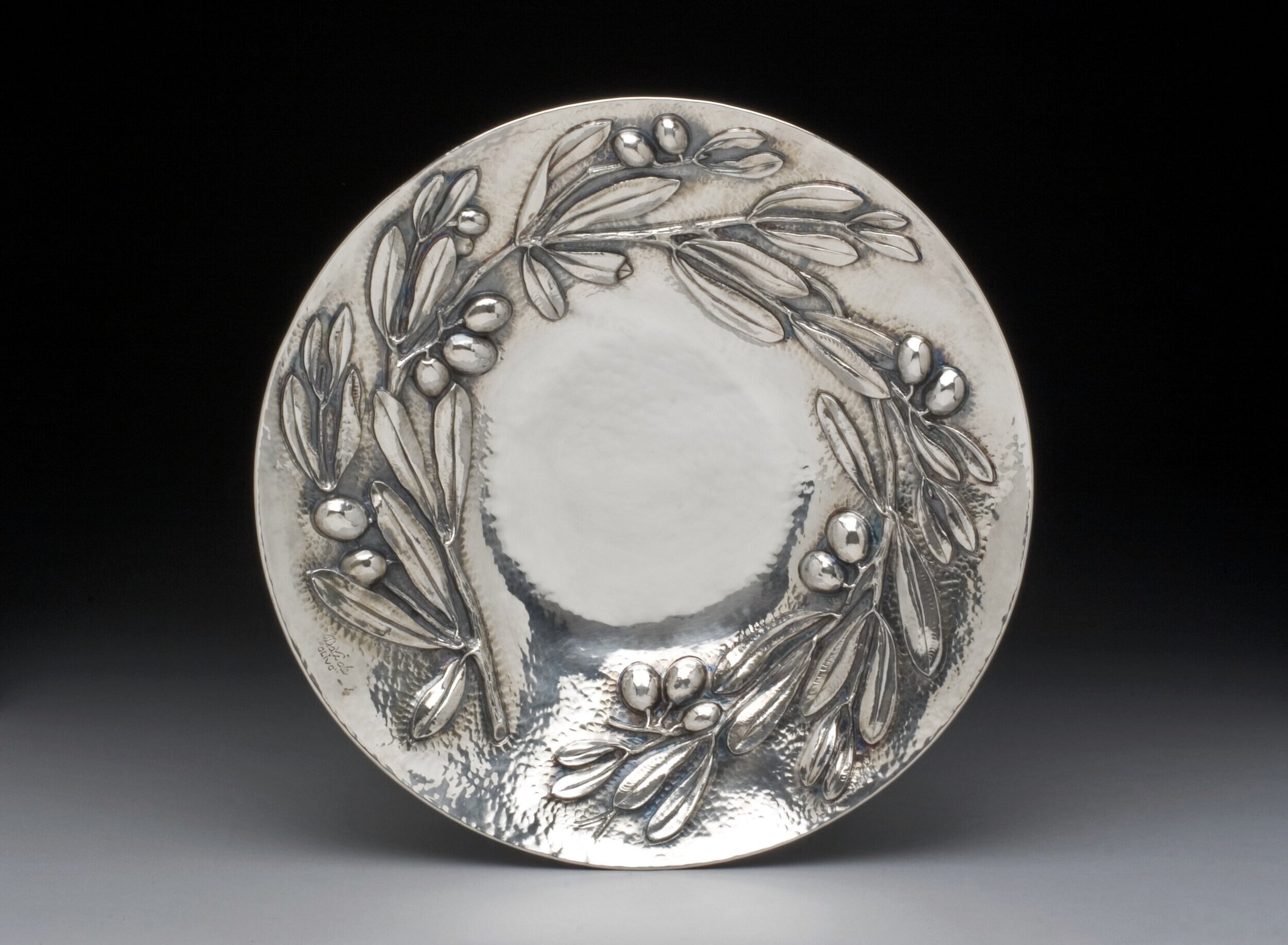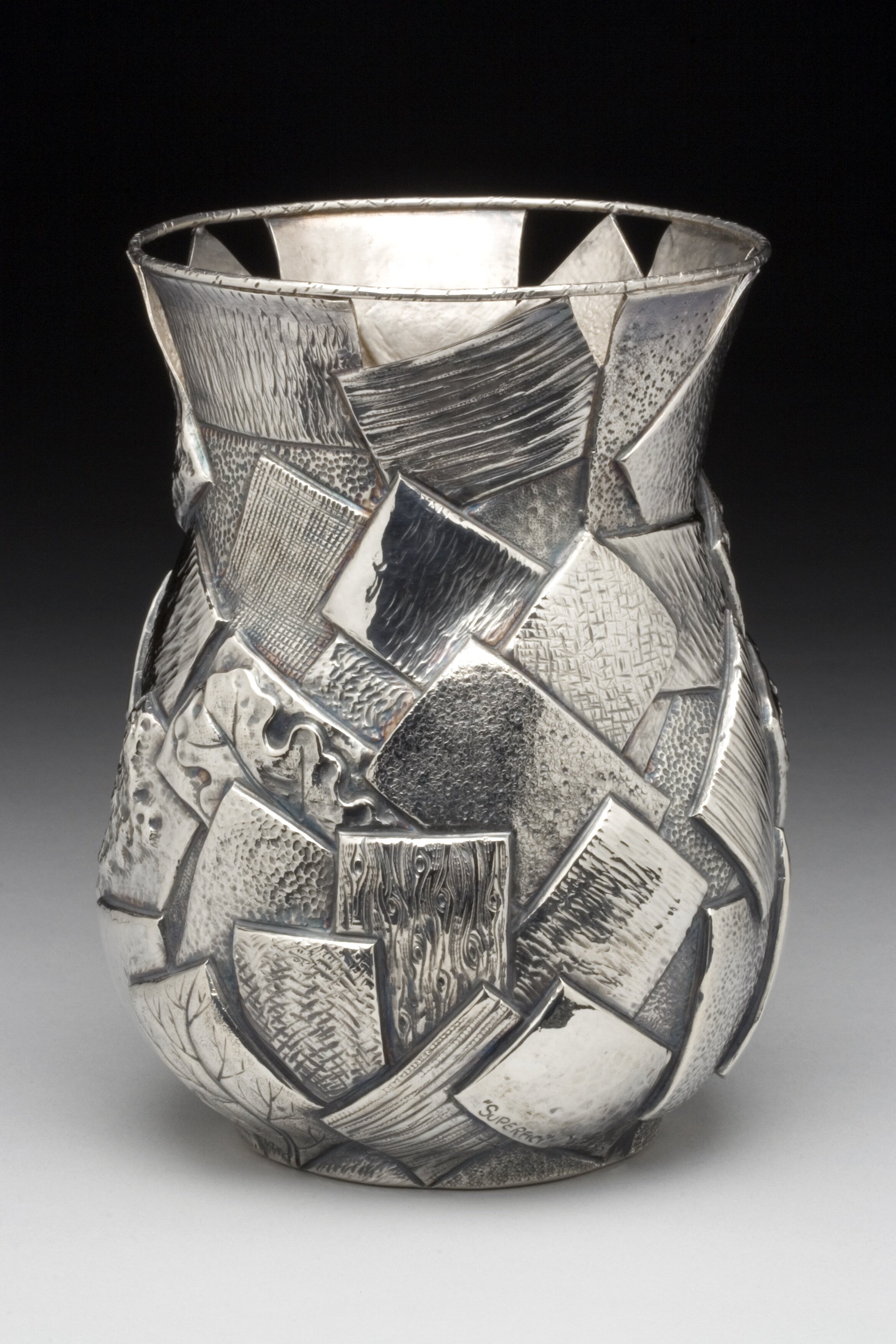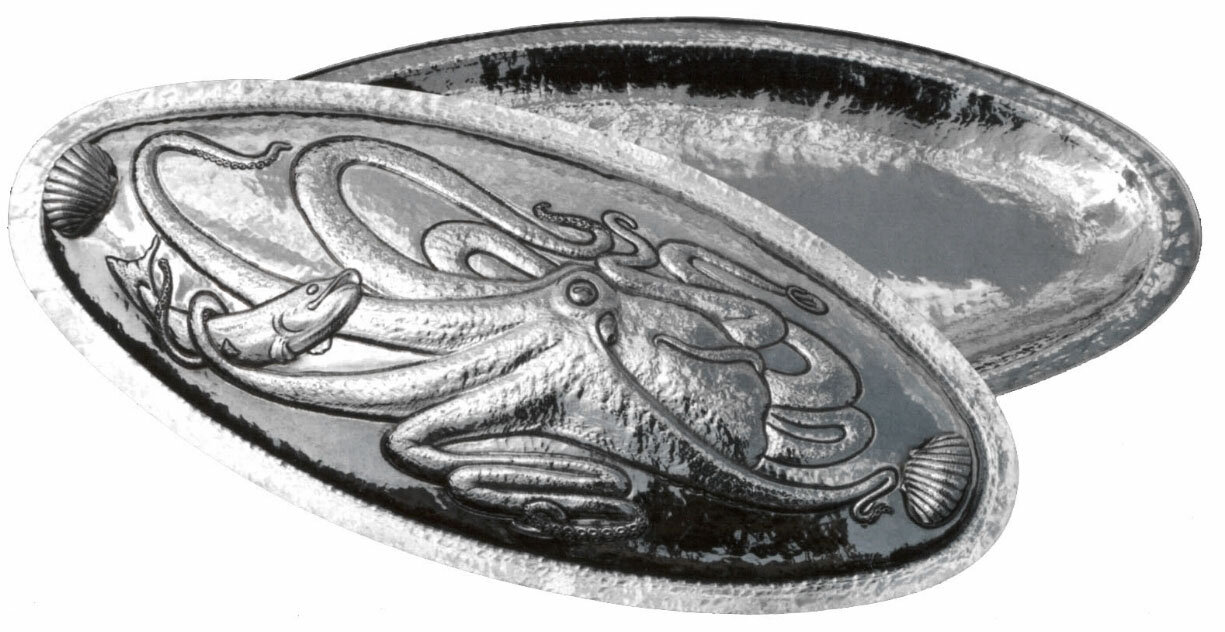A glimpse of Davide Bigazzi’s original work, highlighting his mastery of chasing and repoussé.
〰️
A glimpse of Davide Bigazzi’s original work, highlighting his mastery of chasing and repoussé. 〰️
Chasing and repoussé are metalworking techniques used to shape and adorn metals. Repoussé involves hammering the metal from the back to create shapes or decorations, while chasing refers to detailing a design with specially shaped punches from the front.
Chasing and repoussé have a long and rich history in Italy. They were first developed in ancient Rome, and they were used to create beautiful and intricate objects, such as jewelry, vessels, and sculptures.
In the Middle Ages, chasing and repoussé were used to create religious objects, such as chalices, monstrances, and reliquaries. They were also used to create secular objects, such as mirrors, candlesticks, and snuffboxes.
During the Renaissance, chasing and repoussé reached new heights of artistry. Italian metalworkers used these techniques to create some of the most beautiful and intricate objects ever made, such as the Benvenuto Cellini Salt Cellar and the Medici Vase.
Chasing and repoussé continued to be used in Italy throughout the Baroque, Rococo, and Neoclassical periods. They were used to create a wide variety of objects, including jewelry, vessels, sculptures, and architectural ornaments.
Today, chasing and repoussé are still used by Italian jewelers, silversmiths, and other metalworkers. These techniques are used to create beautiful and intricate objects that are both functional and artistic.
Watch as Davide Bigazzi transforms a sheet of sterling silver into a stunning bowl through the art of chasing and repoussé. >>









